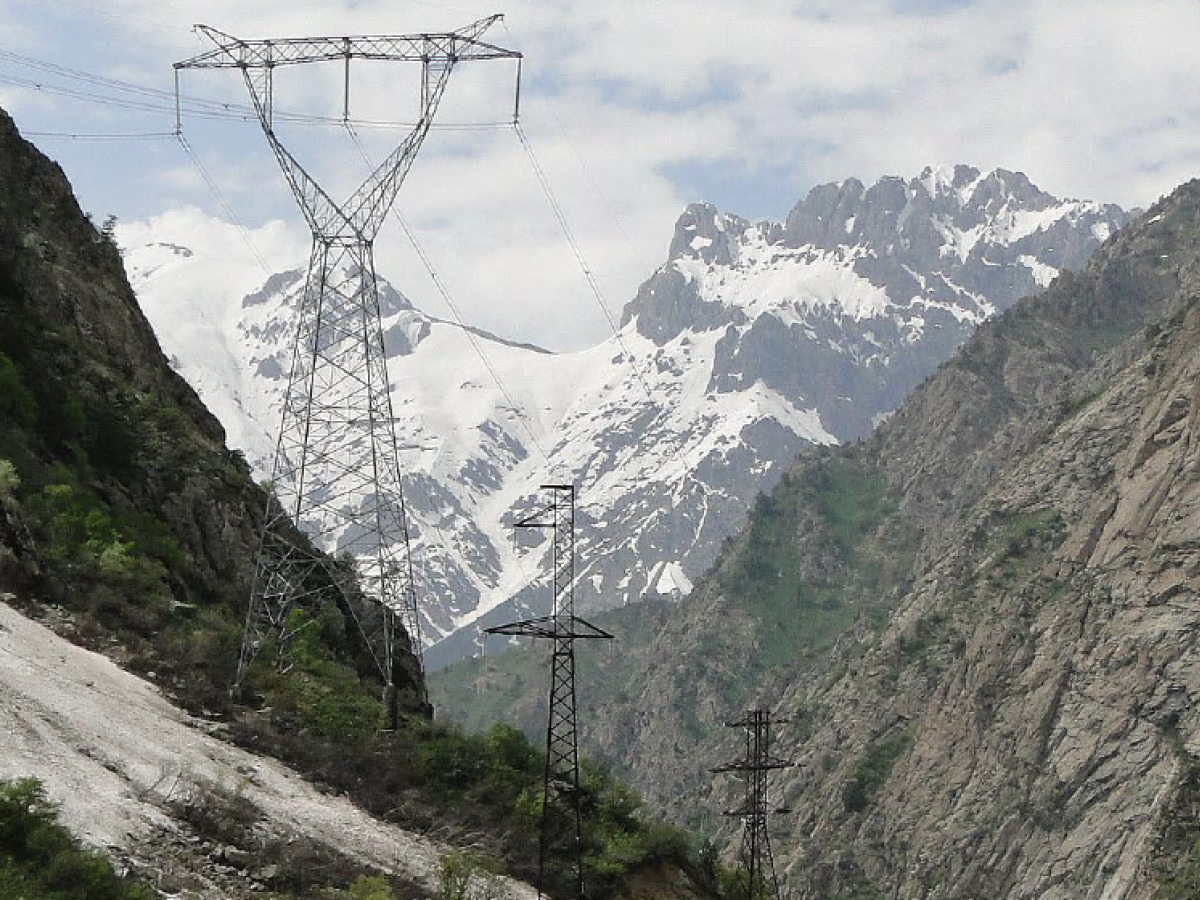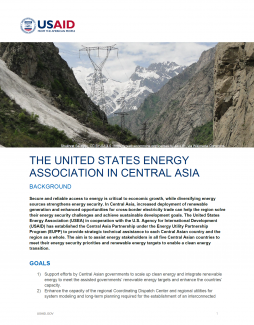BACKGROUND
Secure and reliable access to energy is critical to economic growth, while diversifying energy sources strengthens energy security. In Central Asia, increased deployment of renewable generation and enhanced opportunities for cross-border electricity trade can help the region solve their energy security challenges and achieve sustainable development goals. The United States Energy Association (USEA) in cooperation with the U.S. Agency for International Development (USAID) has established the Central Asia Partnership under the Energy Utility Partnership Program (EUPP) to provide strategic technical assistance to each Central Asian country and the region as a whole. The aim is to assist energy stakeholders in all five Central Asian countries to meet their energy security priorities and renewable energy targets to enable a clean energy transition.
GOALS
- Support efforts by Central Asian governments to scale up clean energy and integrate renewable energy to meet the assisted governments’ renewable energy targets and enhance the countries’ capacity.
- Enhance the capacity of the regional Coordinating Dispatch Center and regional utilities for system modeling and long-term planning required for the establishment of an interconnected regional power system and cross-border trade.
- Enable regional stakeholders with strategies to address technological advances and digitization of manual energy processes and cyber-security issues.
KEY EUPP RESULTS
- Developed dynamic models for the existing network topology and planning models of the national grids for the National Electricity Transmission Company of Uzbekistan (NETC) and Electric Transmission Networks of Tajikistan (ETN) to create an enabling environment for renewable energy integration and the establishment of a Central Asia Regional Electricity Market.
- Conducted a Power System Stability and Reliability study for NETC to offer technical and engineering solutions to increase network stability when integrating renewables. This will allow Uzbekistan to reach its clean energy goals while improving energy supply to its population and maintaining energy independence.
- Developed a regional dynamic model for the Coordinating Dispatch Center Energia to contribute to the establishment of a Central Asia Regional Electricity Market and for expanded integration of renewable generation throughout the region.
- Developed a Strategic Roadmap for Adopting a Digital Substation Technology for the Kazakhstan Electricity Grid Operating Company (KEGOC) to enhance the capacity of KEGOC for reliable, efficient, and less costly operation of Kazakhstan’s national electric grid.
- Facilitated an Information Security Audit and International Standards Organization (ISO) certifications for the Kazakhstan Electricity and Power Market Operator (KOREM) to ensure compliance with domestic and international requirements while enhancing the reliability and security of its information assets.
CONTACTS
Kristen Madler, USAID/E3/Energy Division
Agreement Officer’s Representative
kmadler@usaid.gov |+1(202)712-4295
Marina N. Barnett, USEA-EUPP
Program Manager
mbarnett@usea.org | +1(202)312-1248
Lora Kudaibergenova, USAID/Central Asia
Project Management Specialist
lkudaibergenova@usaid.gov | +7(727)250-7612


